At Architextures, we’re dedicated to sharing our love of materials to bring our growing community of architects and designers the innovative, contemporary materials changing the way we construct our built environment. Our participation at MaterialDistrict in Utrecht allowed us to showcase some of our material manufacturers as well as giving us the opportunity to learn about the new technologies and trends shaping the material world.
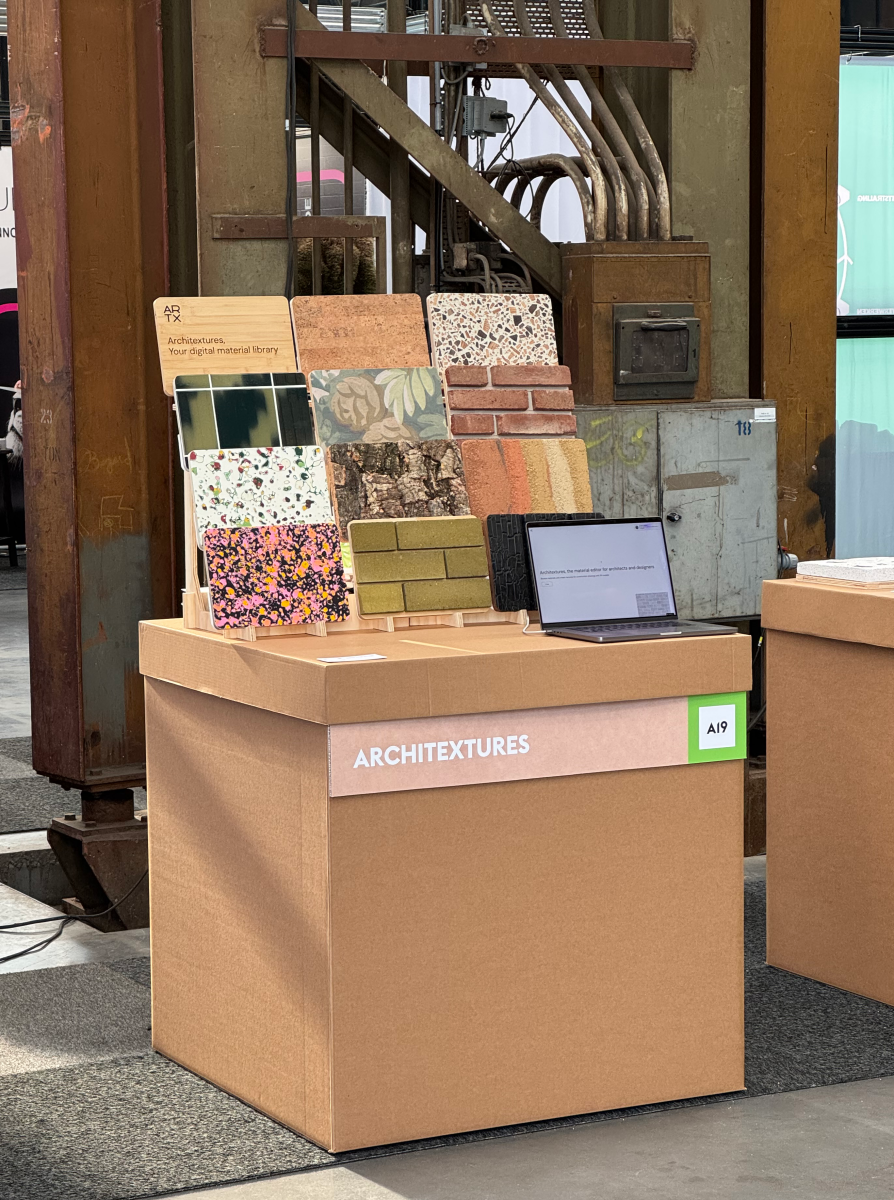
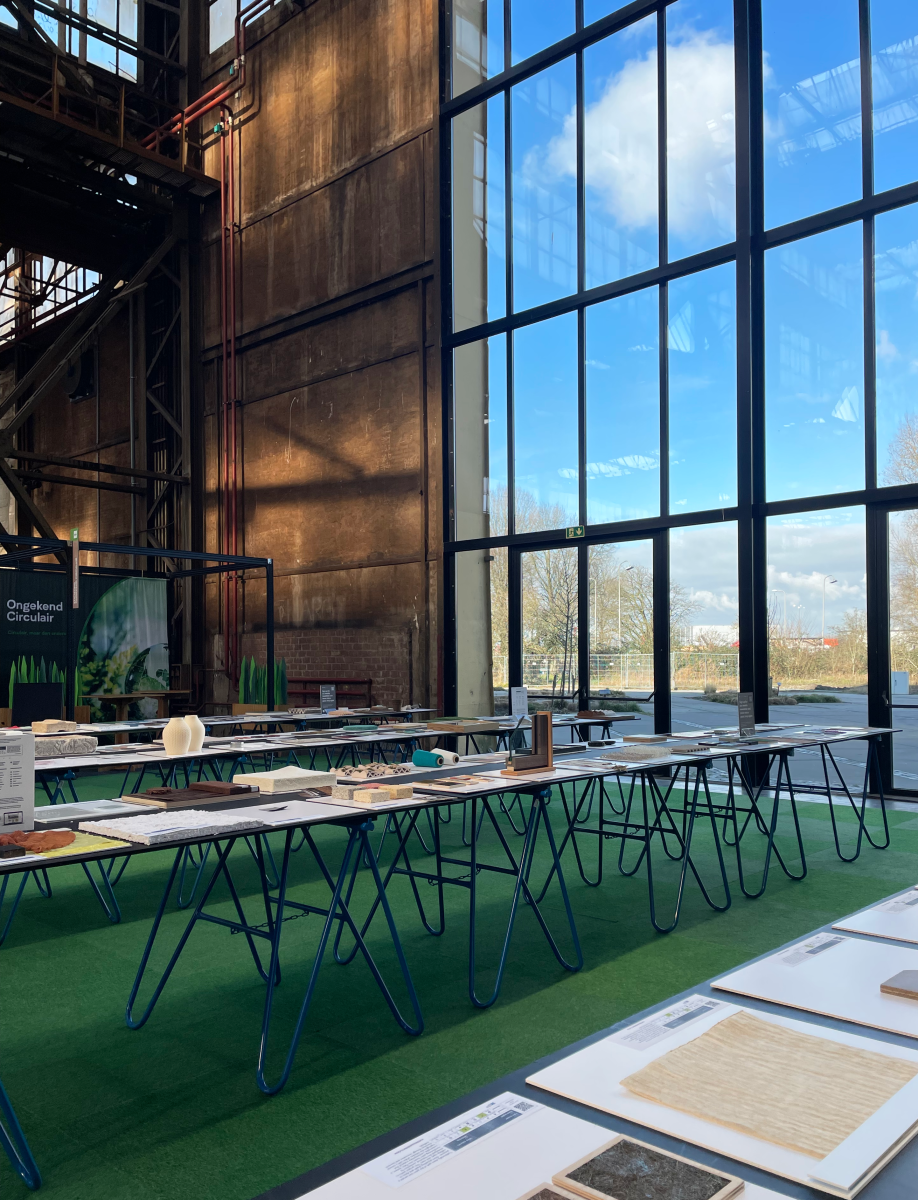 Architextures stand (left) and the material sample library (right) at MaterialDistrict. Image credit, Architextures.
Architextures stand (left) and the material sample library (right) at MaterialDistrict. Image credit, Architextures.
Set in the industrial Werkspoorkathedraal space over three days in March, the event shone a light on sustainability with an emphasis on biobased, circular, and regenerative materials. The rich mix of materials on show were powered by a sense of community, respect for locality and the belief that we can do better.
We spotted some strong emerging material themes:
Recycled and repurposed
The clever and creative repurposing of waste materials was in evidence at the event, with many participating brands pushing the boundaries of recycling to create unique and intricate surface materials. Amongst the waste materials given a new life were blue jeans, marble fragments and reused roof tiles. The urban mining practice of breathing new life into discarded building materials showed the possibilities of a closed-loop built environment.
Reclaimed terrazzo by Duracryl
Duracryl Global Flooring reuse broken marble pieces from existing buildings to make their red list free biopolymer Durabella terrazzo.
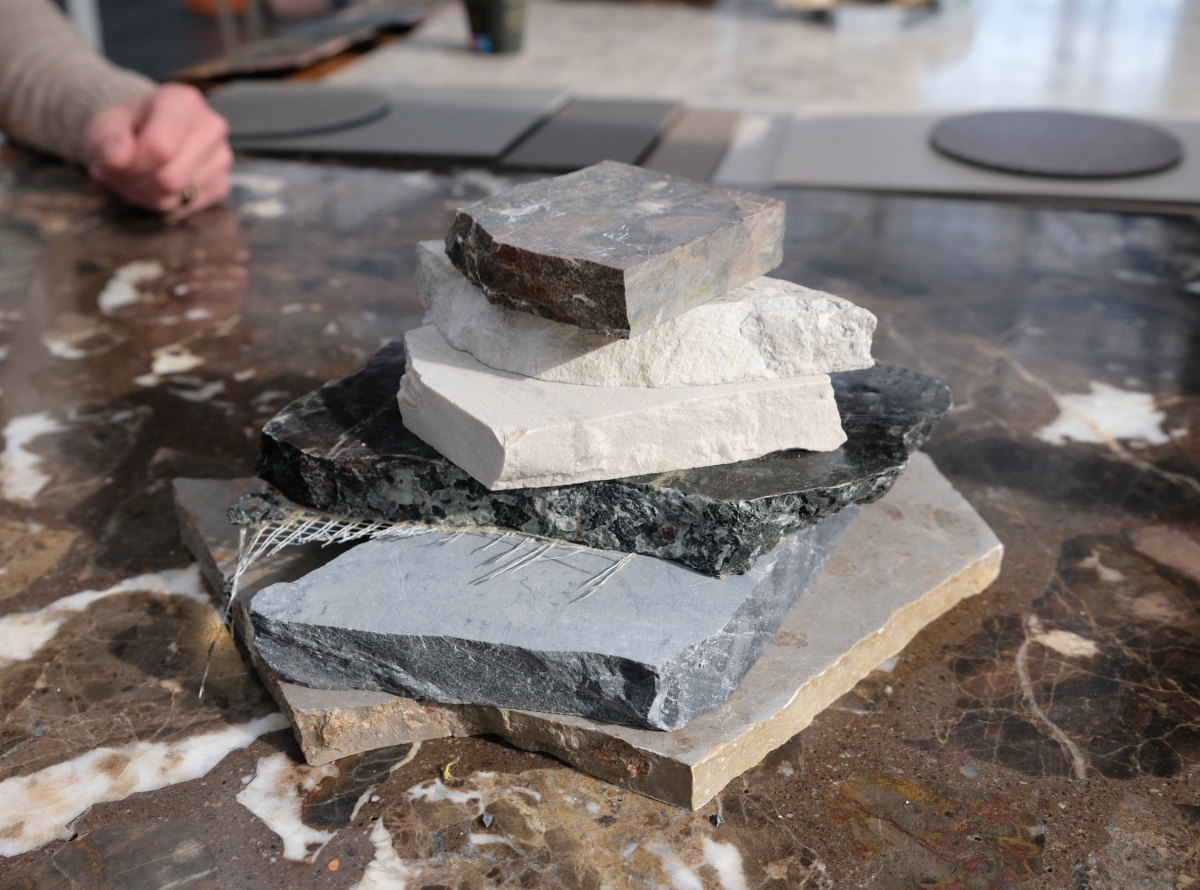 Image credit, Architextures at MaterialDistrict.
Image credit, Architextures at MaterialDistrict.
Roof tile façade by Nudus
Architecture studio, Nudus' recent project, the Matrix Innovation Center in Amsterdam, features an earth-toned façade made from stacked reused roof tiles.
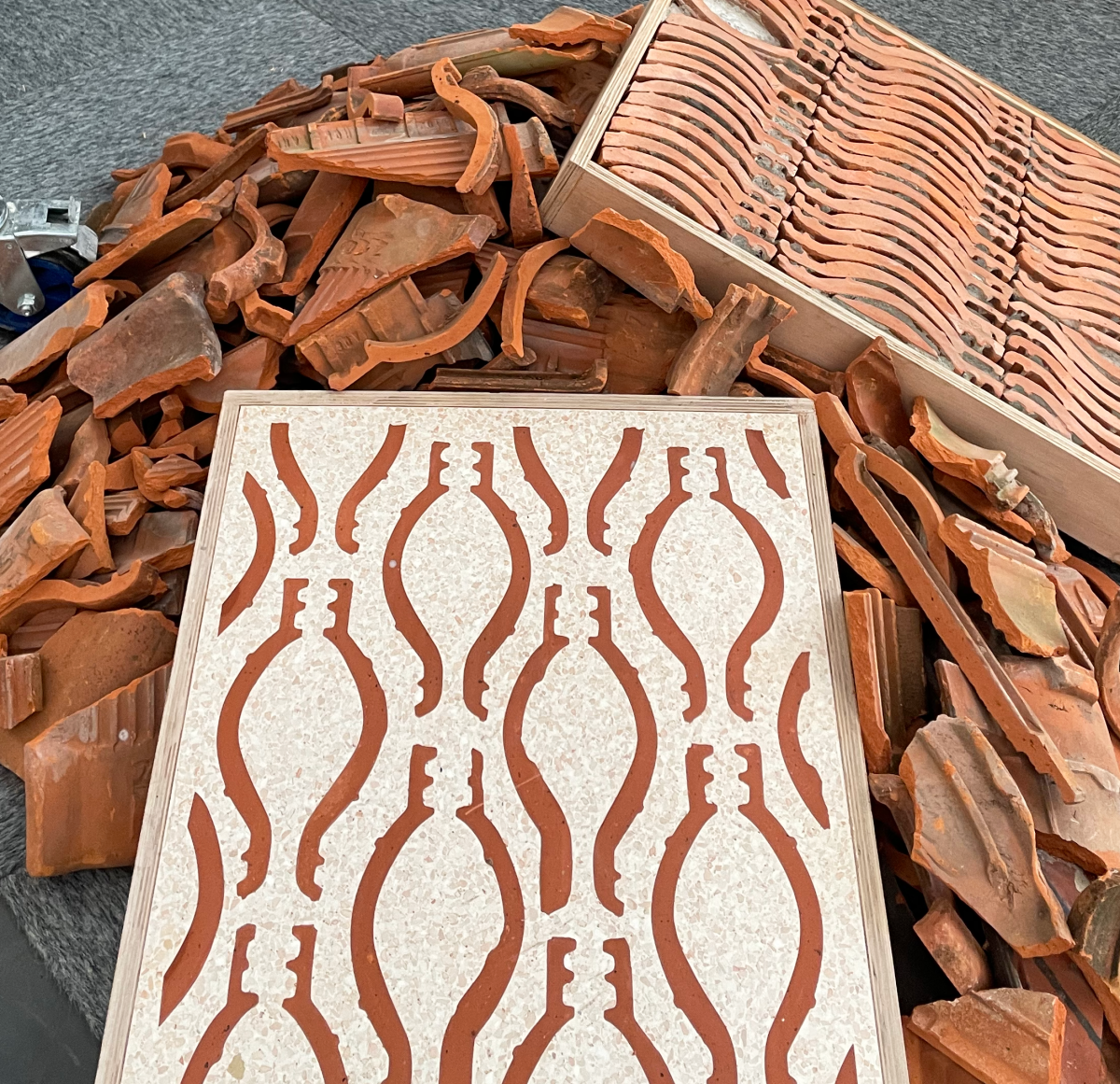 Image credit, Architextures at MaterialDistrict.
Image credit, Architextures at MaterialDistrict.
Recycled terrazzo by Diggels
Circular, 'urban-mined' terrazzo by Diggels made from recycled building materials including concrete, masonry, bricks and roof tiles, glass and local shells.
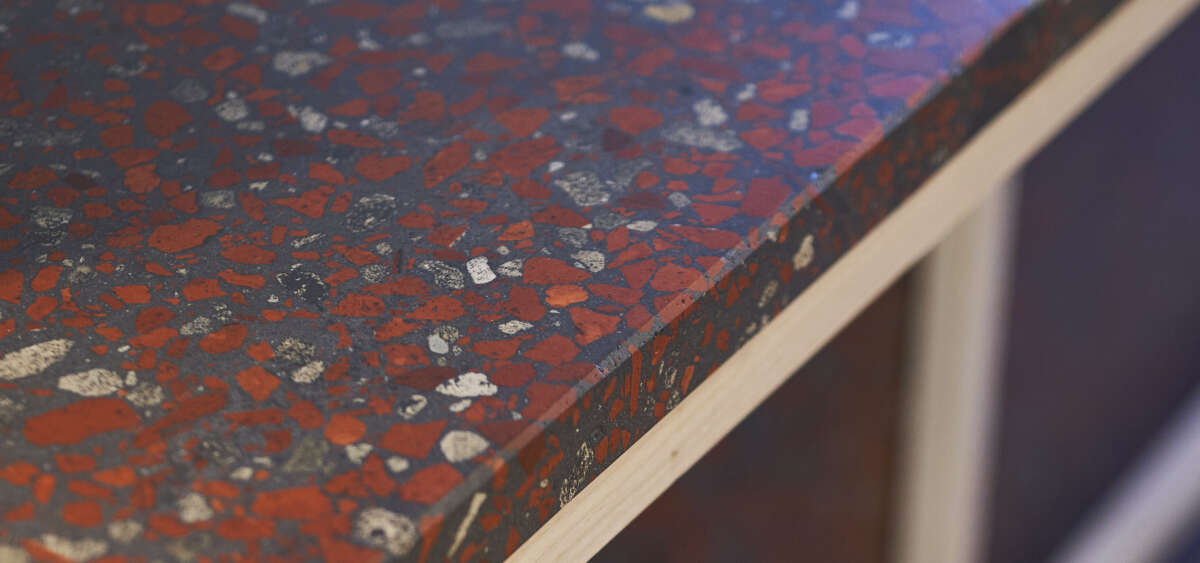 Image credit, Diggels.
Image credit, Diggels.
Timber terrazzo by Foresso
Foresso's timber terrazzo, one of the materials displayed by Architextures at the event, is made with wood waste from local felled trees to create a unique, durable surface material. Learn more about Foresso's process here.
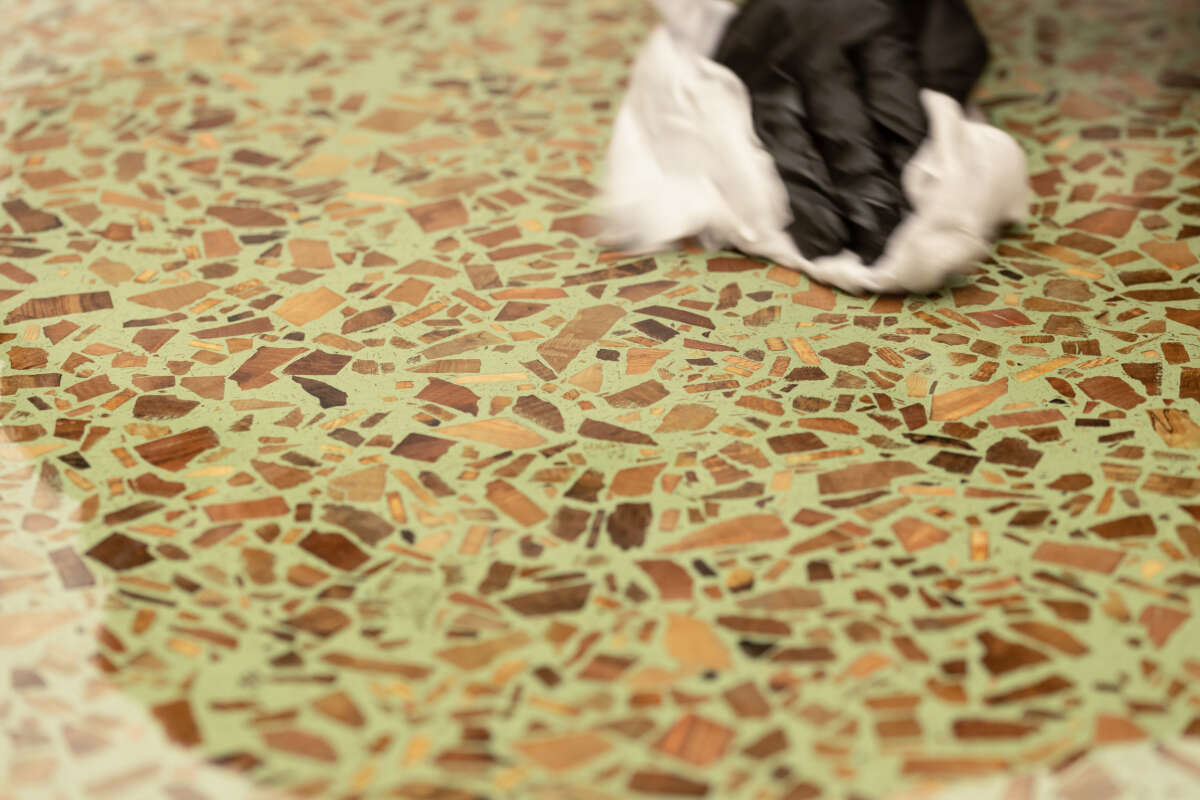 Image Credit, Foresso, Handover Agency.
Image Credit, Foresso, Handover Agency.
Recycled denim surfaces from DenimX
DenimX, represented by Maiburg at MaterialDistrict, repurposes denim textile waste to create a circular bio-laminate.
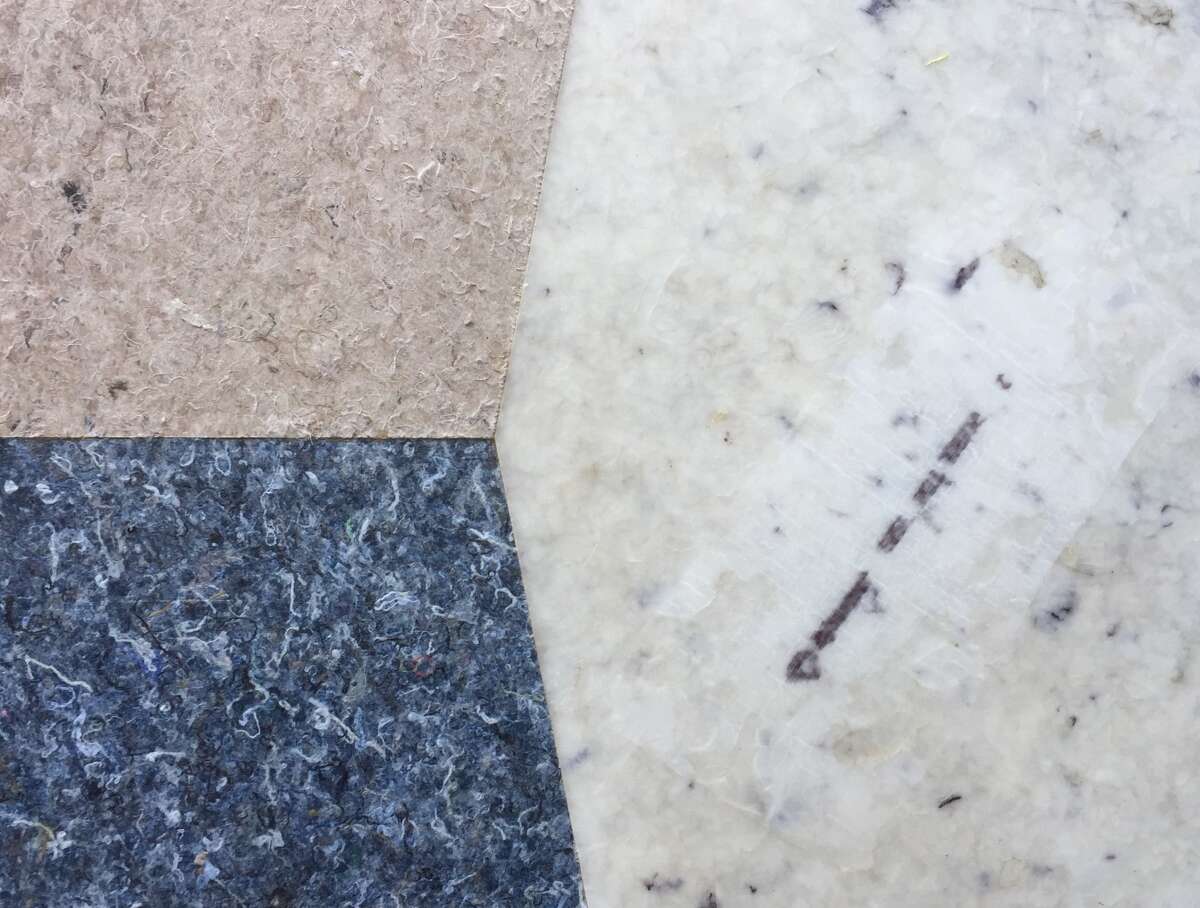 Image credit, DenimX.
Image credit, DenimX.
Revisiting and rethinking tradition
Traditional craftsmanship and techniques were revisited and celebrated, with a strong focus on storytelling. Several projects that breathed new life into old ways of working caught our eye. Examples of looking back to move forwards to a more sustainable future included a study of the craft of ancient eelgrass thatched houses on the Danish Island of ‘Læsø’ and a project that draws on traditional craftsmanship to create a 100% shell-based lime plaster. A return to traditional building materials and methods paired with innovative thinking about the challenges we face is a powerful combination.
Eelgrass thatched roofs from Luna Wirtz-Ortvald
‘Reconstructing a Practice’ by Luna Wirtz-Ortvald explores the valuable heritage and strong ecological potential of traditional eelgrass thatched houses on the Danish Island of Læsø.
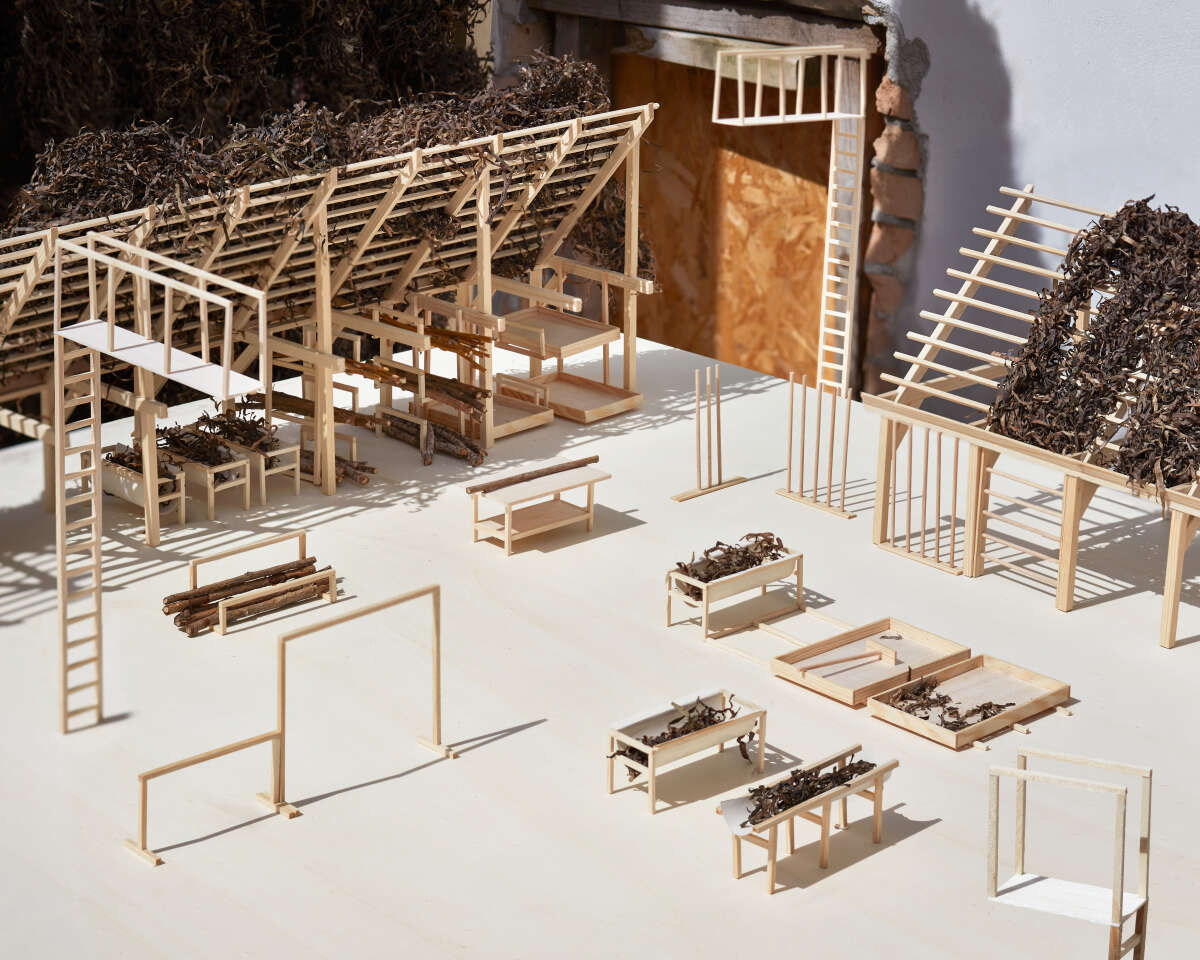 Image credit, Luna Wirtz-Ortvald & Ronald Smits.
Image credit, Luna Wirtz-Ortvald & Ronald Smits.
Mussel Up by Alessa Joanna Grotz
Mussel Up, developed by Alessa Joanna Grotz, is a 100% shell-based lime plaster that blends ancient techniques with sustainable innovation and highlights the potential of shell waste as a circular building material.
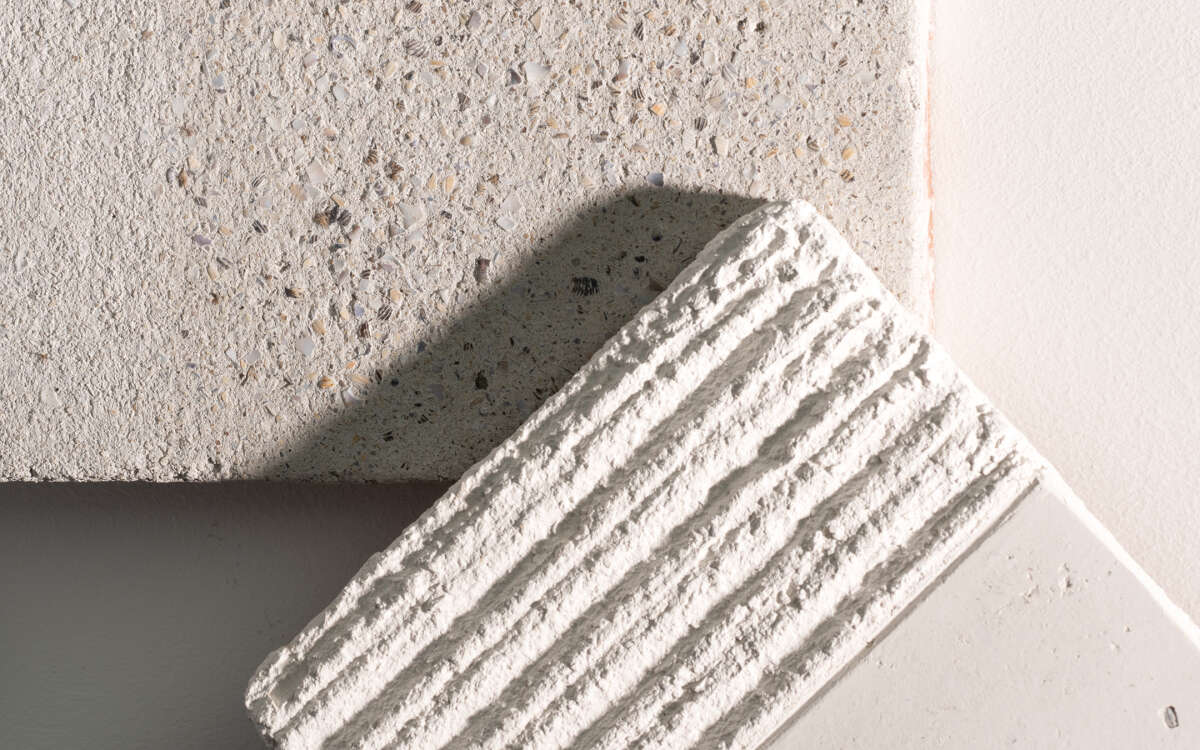 Image credit, Alessa Joanna Grotz.
Image credit, Alessa Joanna Grotz.
Mirrl
Our partner brand Mirrl, also displayed by Architextures at the event, uses a three-hundred-year-old Japanese lacquerware technique to create intricate surface materials. Read more about Mirrl in this Story
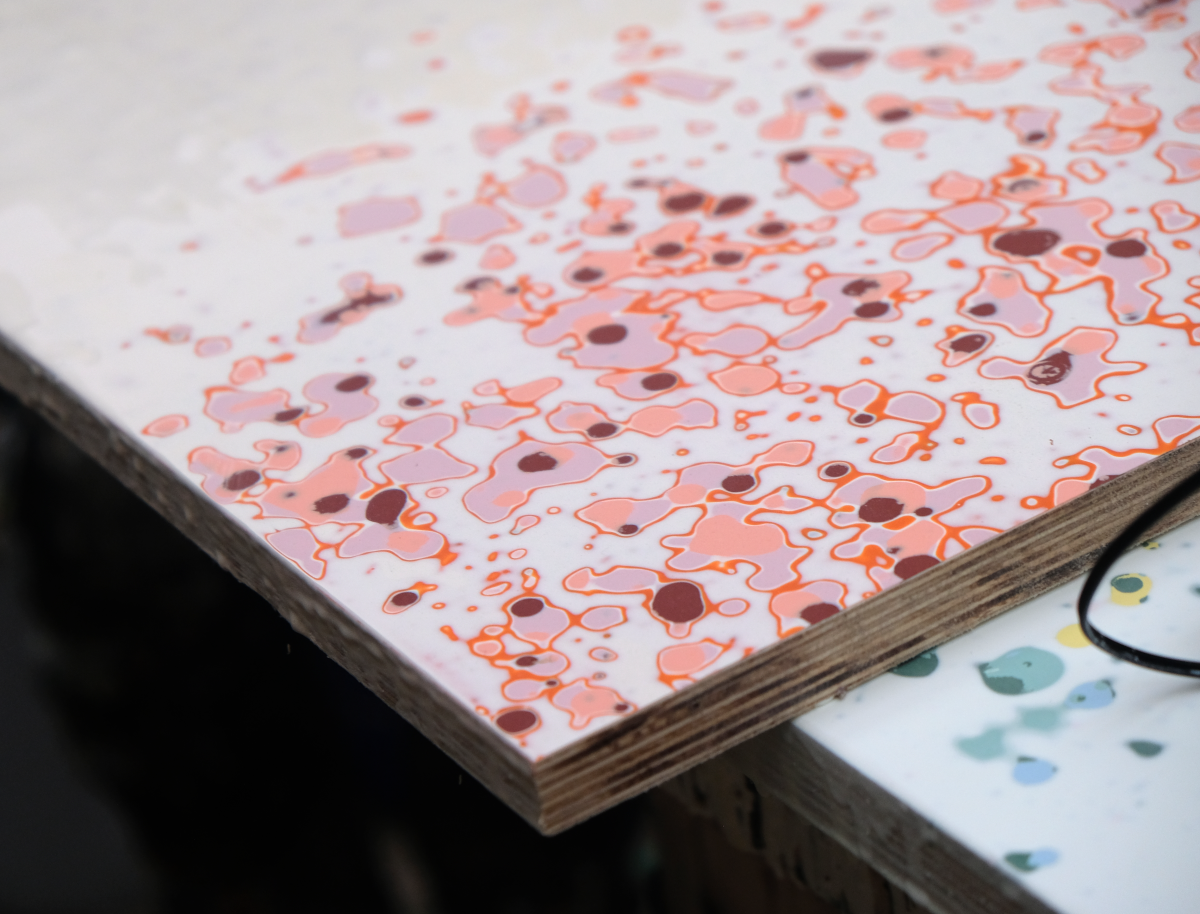 Image credit, Architextures.
Image credit, Architextures.
Responsibly and locally sourced
Many of the materials on show had a particular relationship with the Dutch landscape. Projects highlighted the benefits of using the available raw materials at hand to rethink economic systems and supply chains in order to propose a more equitable and symbiotic future. Keeping local and knowing your provenance enabled designers to respectfully use natural resources including river clay, mussels, cork, flax and wool to create products that allowed the material to take centre stage.
The Linen Project
The Linen Project explores how local, small-scale linen production can be a model for a new economic system that prioritises community, sustainability, and reciprocity over profit.
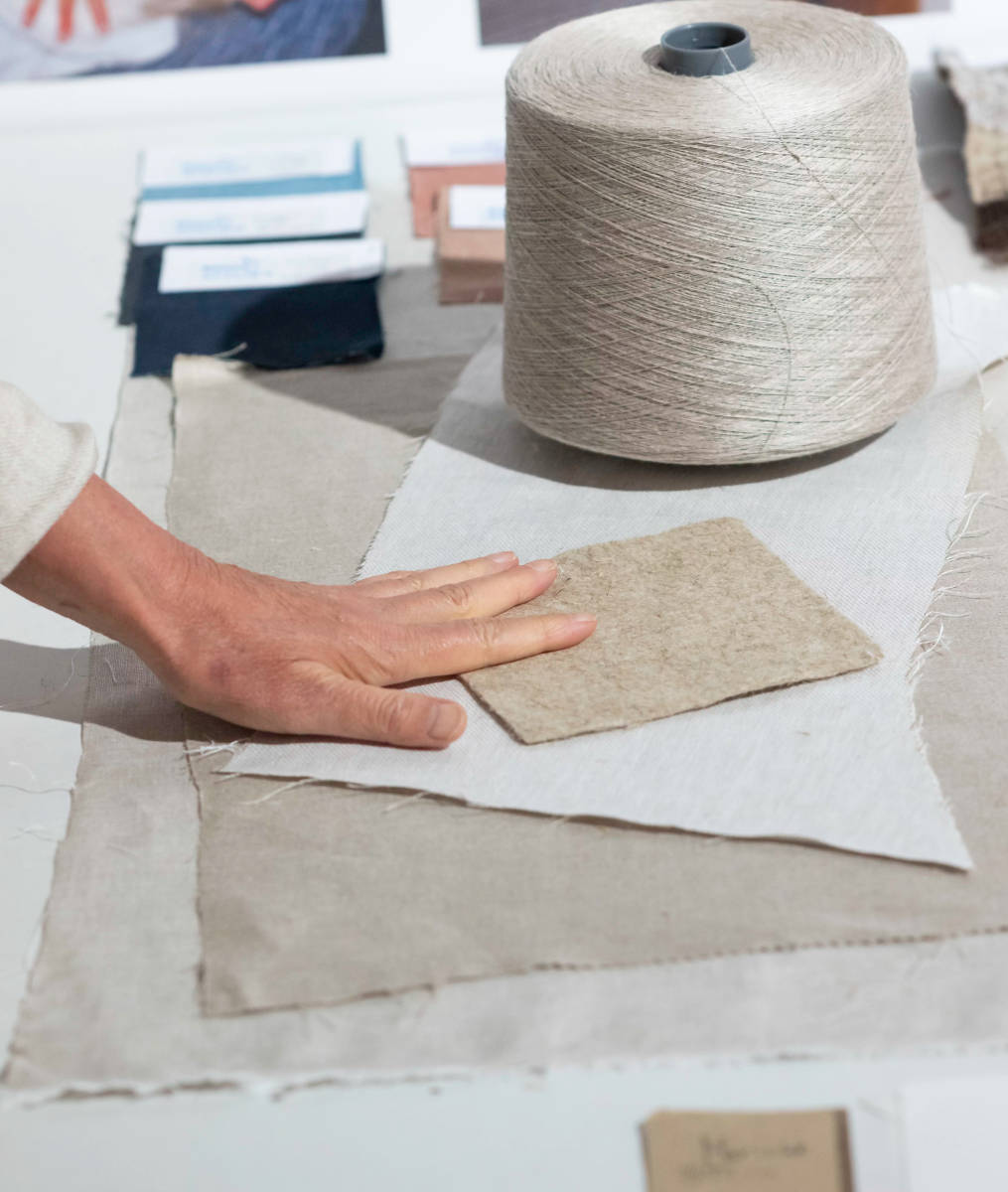 Image credit, Eduard van Wijk for The Linen Project.
Image credit, Eduard van Wijk for The Linen Project.
Local wool from Hollands Wol Collectief
Supplying local industries, Hollands Wol Collectief, advocates for a circular supply chain with wool felt and fibres made from 100% Dutch sheep wool.
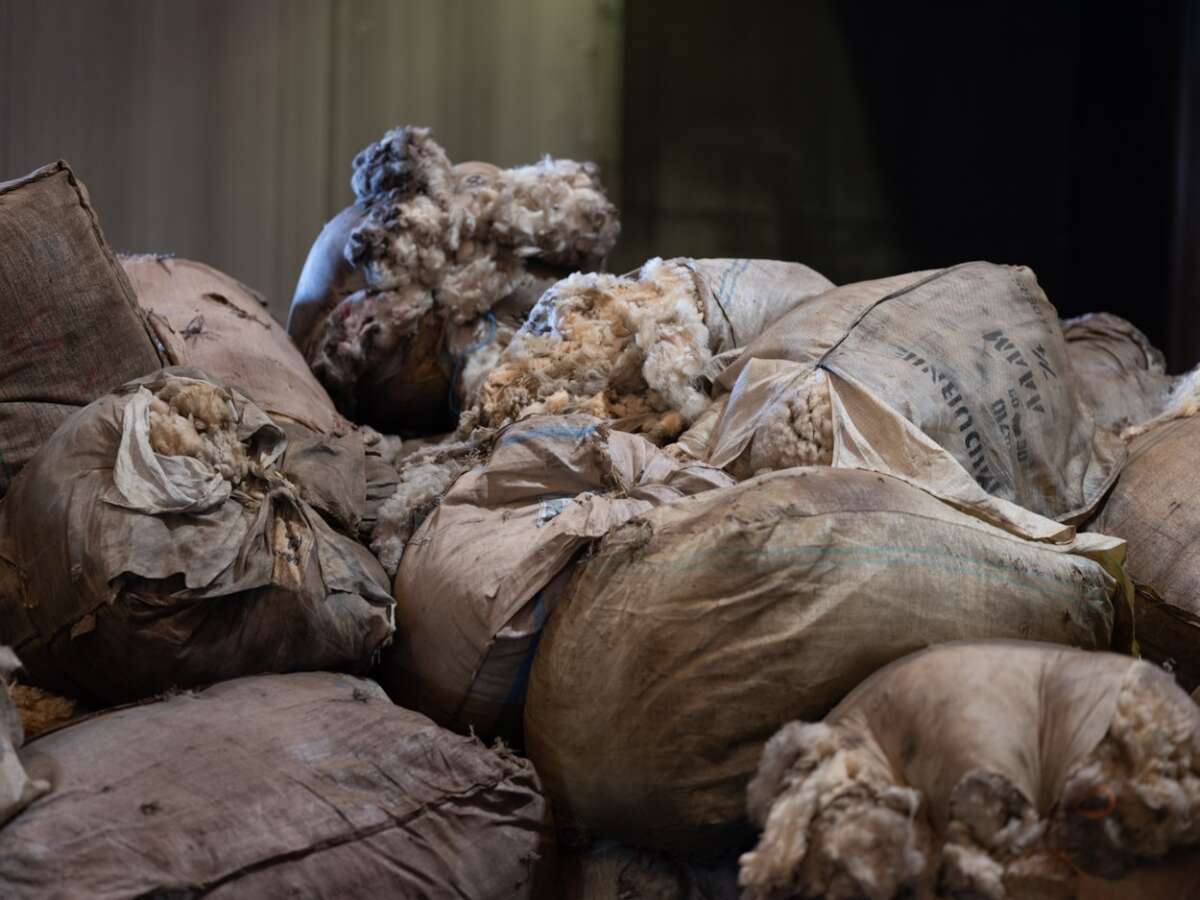 Image credit, Marjolein Vinkenoog for Hollands Wol Collectief.
Image credit, Marjolein Vinkenoog for Hollands Wol Collectief.
Terra_Laboratory by Fabrikaat
Research by design and placemaking studio Fabrikaat explores circular alternatives for traditional ceramics using local residual and plant-based materials such as river clay and Japanese knotweed.
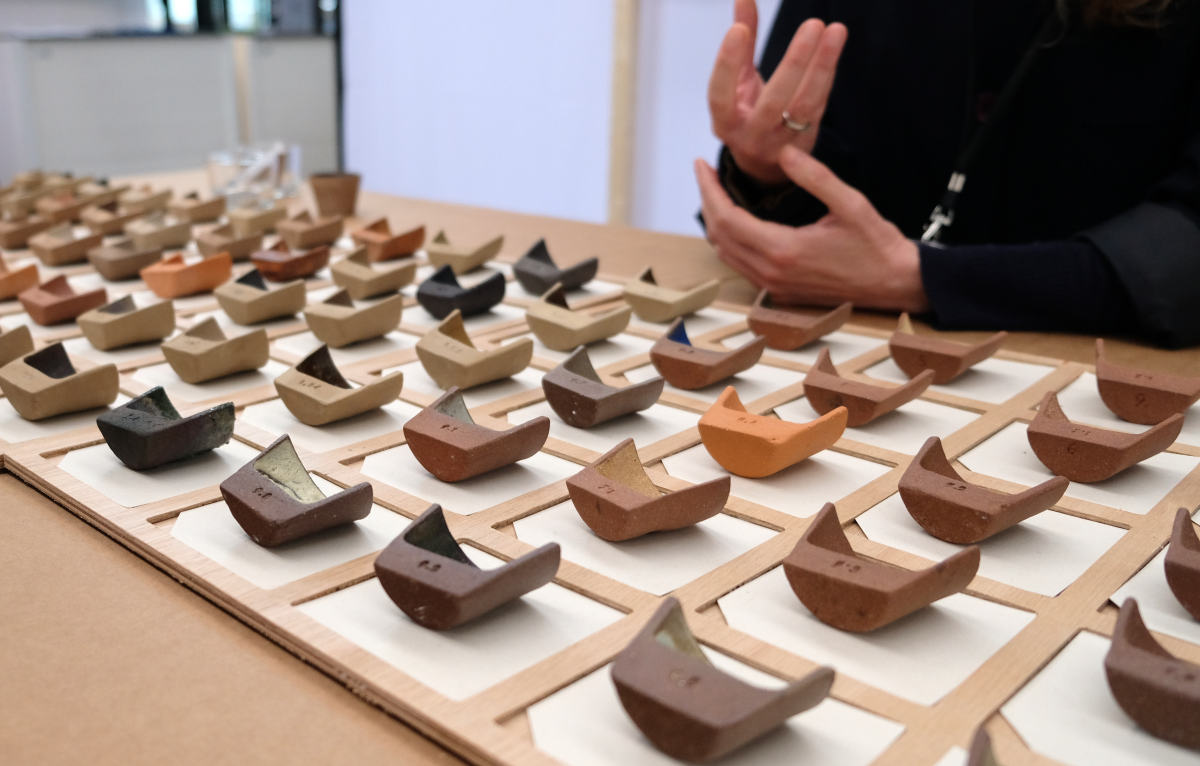 Image credit, Architextures at MaterialDistrict.
Image credit, Architextures at MaterialDistrict.
Seacrete by Studio Lotek
Seacrete by Studio Lotek responds to the idea of Symbiocene and “demonstrates that thriving means designing for all species, not just our own”. Using oysters and mussel shells from the Dutch coast, Seacrete proposes a new material culture as an alternative to cement and concrete.
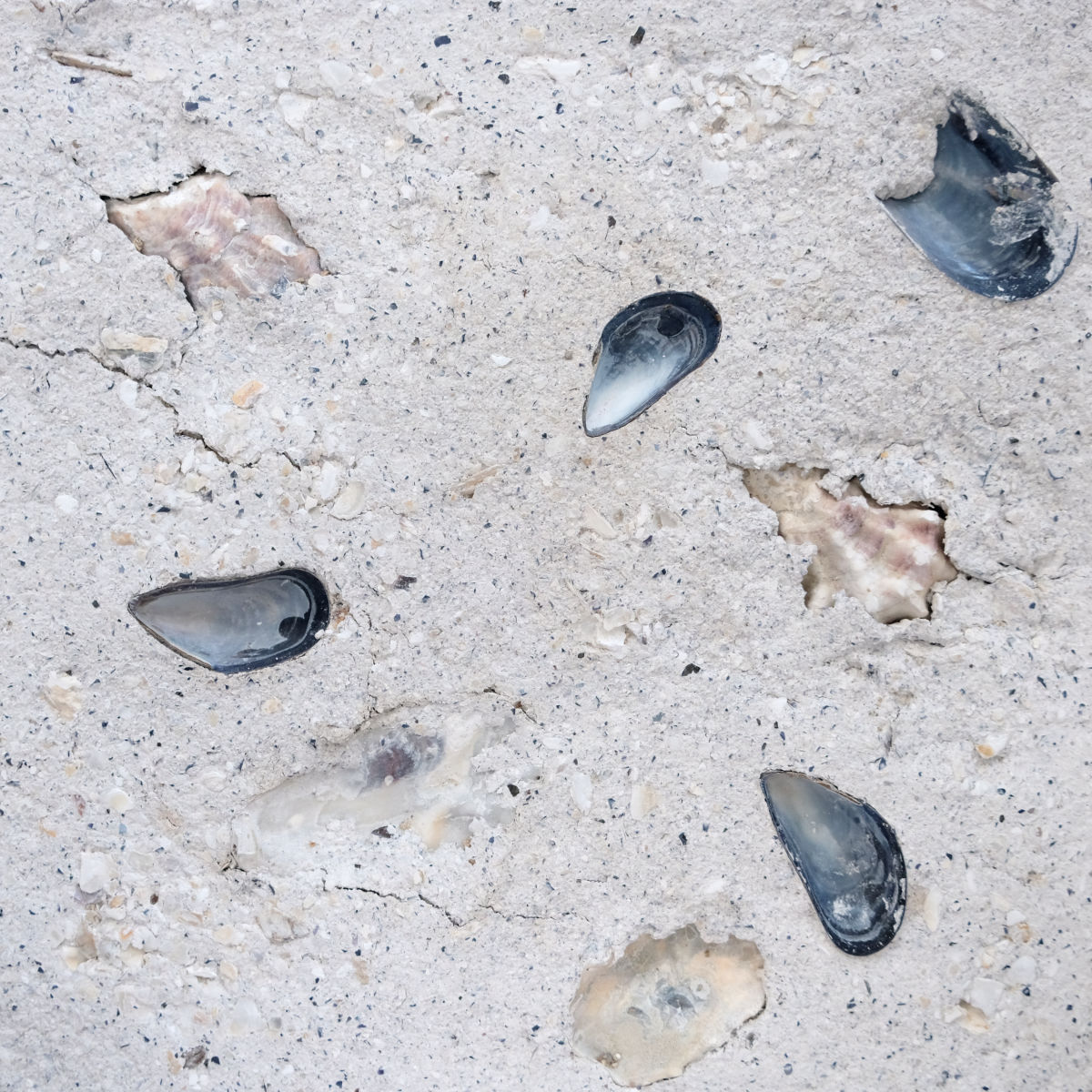 Image credit, Architextures at MaterialDistrict.
Image credit, Architextures at MaterialDistrict.
Erin Moodie is an interior designer and a content designer at Architextures. Vanessa Norwood is a curator and consultant for the built environment advocating for low-carbon architecture and materials.

